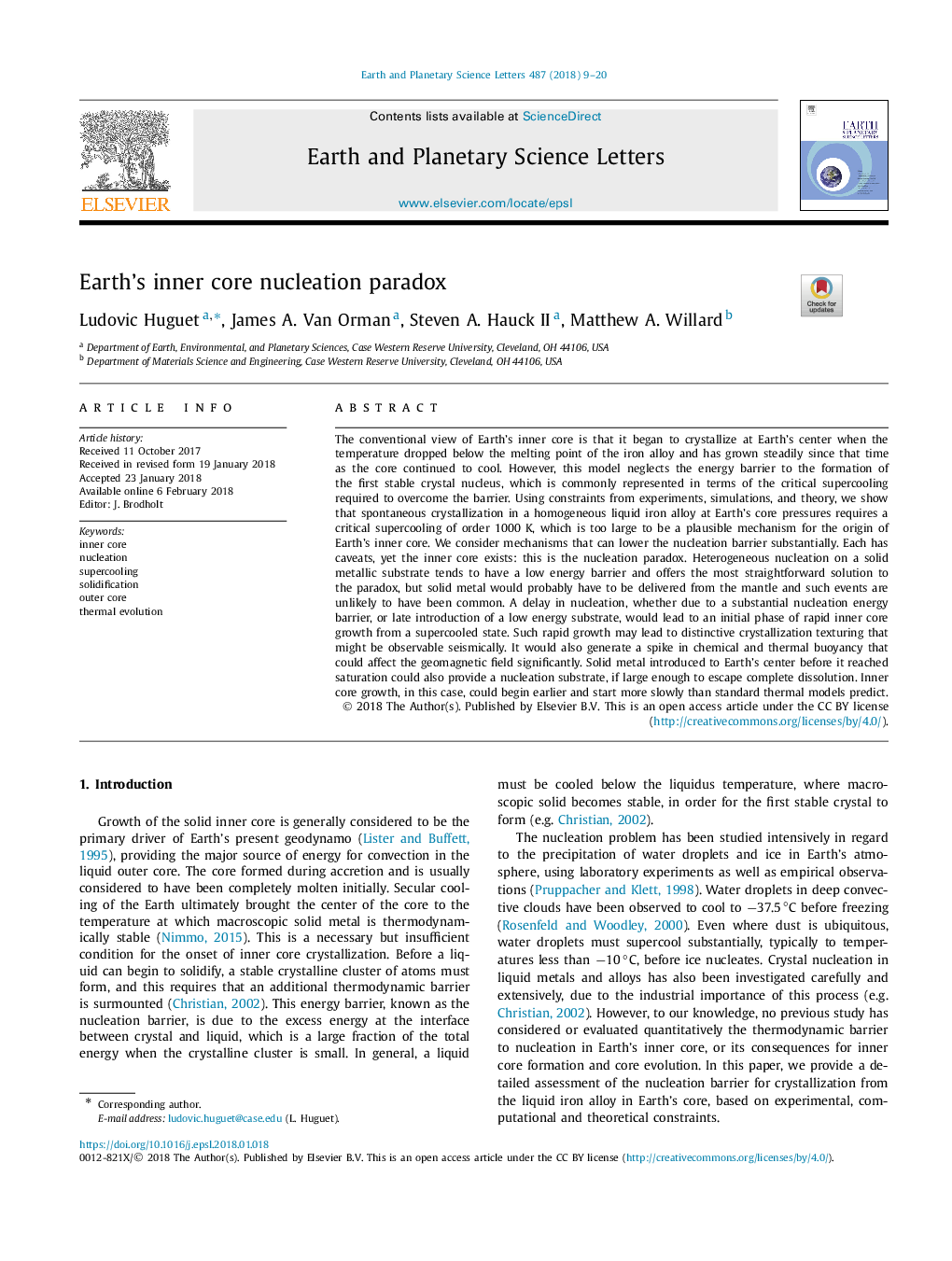| Article ID | Journal | Published Year | Pages | File Type |
|---|---|---|---|---|
| 8907062 | Earth and Planetary Science Letters | 2018 | 12 Pages |
Abstract
The conventional view of Earth's inner core is that it began to crystallize at Earth's center when the temperature dropped below the melting point of the iron alloy and has grown steadily since that time as the core continued to cool. However, this model neglects the energy barrier to the formation of the first stable crystal nucleus, which is commonly represented in terms of the critical supercooling required to overcome the barrier. Using constraints from experiments, simulations, and theory, we show that spontaneous crystallization in a homogeneous liquid iron alloy at Earth's core pressures requires a critical supercooling of order 1000 K, which is too large to be a plausible mechanism for the origin of Earth's inner core. We consider mechanisms that can lower the nucleation barrier substantially. Each has caveats, yet the inner core exists: this is the nucleation paradox. Heterogeneous nucleation on a solid metallic substrate tends to have a low energy barrier and offers the most straightforward solution to the paradox, but solid metal would probably have to be delivered from the mantle and such events are unlikely to have been common. A delay in nucleation, whether due to a substantial nucleation energy barrier, or late introduction of a low energy substrate, would lead to an initial phase of rapid inner core growth from a supercooled state. Such rapid growth may lead to distinctive crystallization texturing that might be observable seismically. It would also generate a spike in chemical and thermal buoyancy that could affect the geomagnetic field significantly. Solid metal introduced to Earth's center before it reached saturation could also provide a nucleation substrate, if large enough to escape complete dissolution. Inner core growth, in this case, could begin earlier and start more slowly than standard thermal models predict.
Related Topics
Physical Sciences and Engineering
Earth and Planetary Sciences
Earth and Planetary Sciences (General)
Authors
Ludovic Huguet, James A. Van Orman, Steven A. II, Matthew A. Willard,
